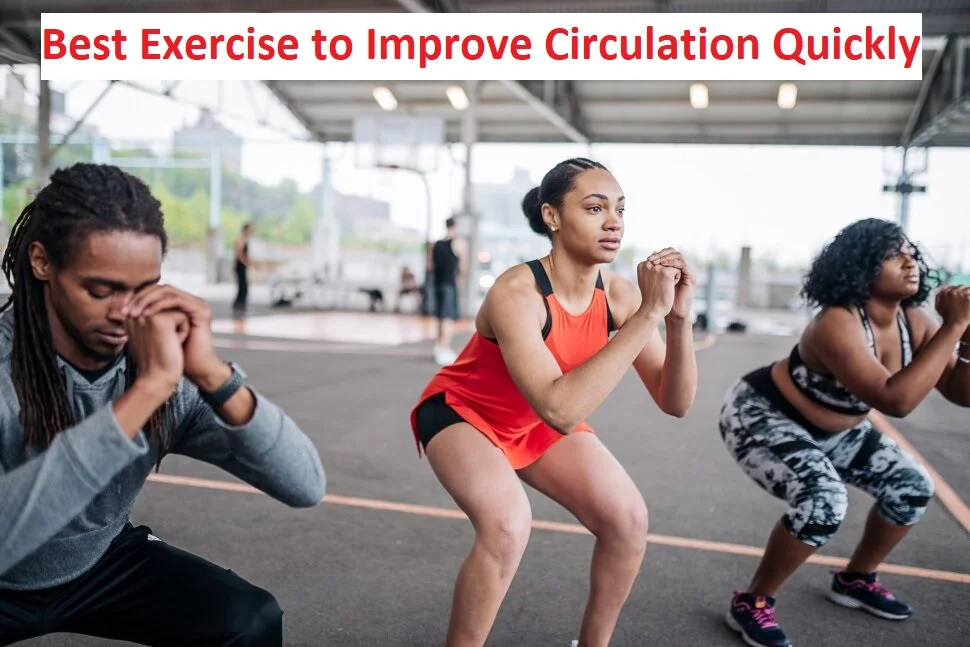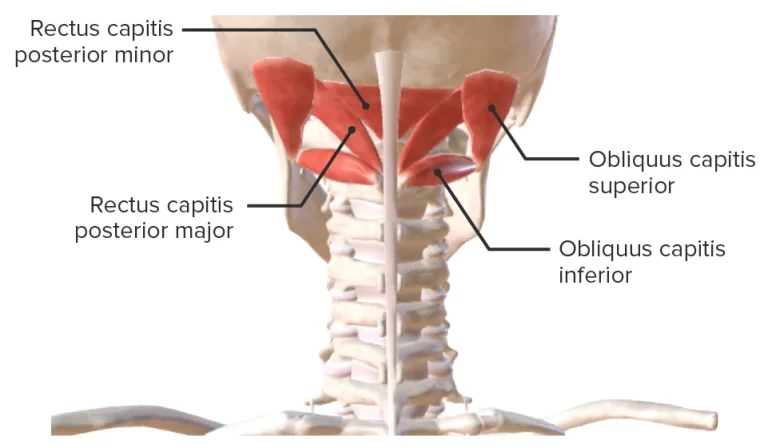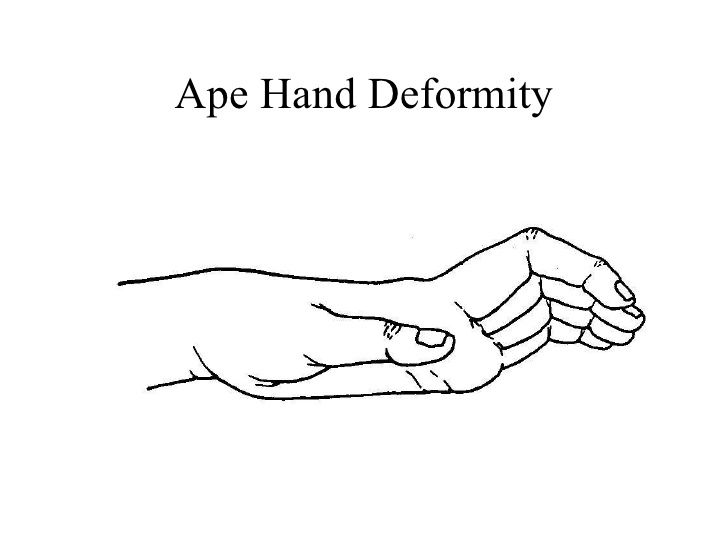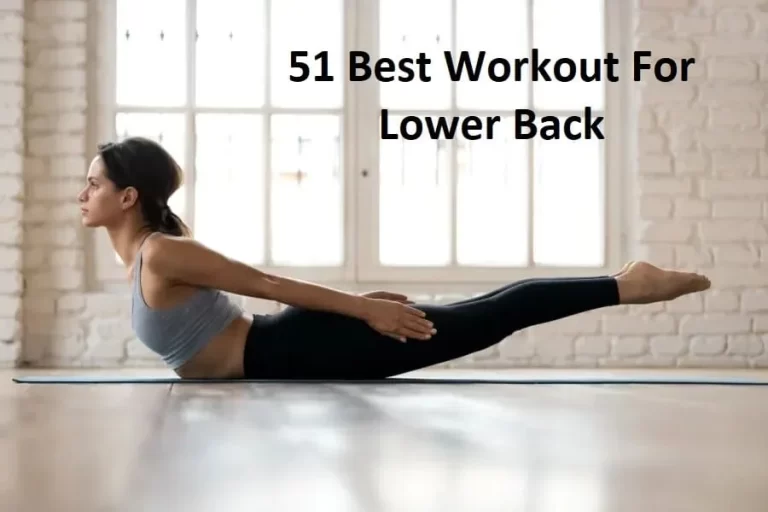Best Exercise to Improve Circulation
Table of Contents
Introduction:
Regular physical exercise is essential for maintaining good circulation throughout the body. When we engage in physical activity, our heart rate increases, pumping oxygen-rich blood to the muscles and organs, thereby improving circulation.
There are various exercises that can effectively enhance circulation and promote overall cardiovascular health. From aerobic activities like running and swimming to low-impact exercises such as walking or cycling, each form of exercise has its own benefits for circulation. By incorporating regular exercise into your routine, you can improve blood flow, strengthen your cardiovascular system, and experience a range of other health benefits.
Increasing exercise levels and keeping a healthy weight are two strategies to increase circulation, even though it is primarily an automated process.
Blood circulates throughout the body, carrying oxygen-rich blood to the brain and other tissues while also removing waste materials. Additionally, it returns blood deficient in oxygen from the body and brain to the lungs for reoxygenation.
Blood circulation, or its movement throughout our bodies, is crucial for health. By distributing oxygen throughout the body and assisting in the elimination of waste, healthy circulation supports all of our biological systems. Legs that are heavy or fatigued, chilly fingers and toes, low vitality, and even dull skin might be indicators of poor circulation or a lack of strong blood flow. Exercise is a simple approach to improve circulation. You’ll notice that you just have a little bit more energy while your heart is racing.
Circulation is the process through which blood is pumped by the heart and circulated throughout the body via a network of blood vessels. It plays a crucial role in delivering oxygen, nutrients, hormones, and immune cells to various tissues and organs, while simultaneously removing waste products and carbon dioxide. The circulatory system, comprised of the heart, arteries, veins, and capillaries, works together to ensure the continuous flow of blood, enabling the body’s cells to receive the necessary resources for proper functioning and maintaining overall health.
It’s critical to maintain healthy circulation for general health and well-being. Regular exercise, a balanced diet, hydration, avoidance of smoking, and managing underlying health conditions are some ways to support healthy circulation. Poor circulation can lead to various health issues, including numbness or tingling in the extremities, cold hands and feet, fatigue, slow wound healing, and increased risk of certain conditions like peripheral artery disease.
Risk factors for Poor Circulation:
- Sedentary lifestyle: Circulation can be significantly impacted by inactivity or extended periods of sitting or standing. Blood flow is decreased and the circulatory system is weakened by inactivity.
- Obesity: Carrying around too much body weight puts extra pressure on the heart and blood arteries, which results in impaired circulation. Additionally, fat buildup can make the blood arteries smaller, which limits blood flow.
- Smoking: Smoking harms blood vessels and lessens their capacity for healthy dilation and contraction. It raises the possibility of getting peripheral arterial disease (PAD), which impairs blood flow, as well as atherosclerosis, which hardens the arteries.
- Uncontrolled high blood pressure: It can damage the arteries and hinder circulation. It puts the heart under additional stress, which hinders efficient blood flow.
- High Cholesterol: High cholesterol levels can cause plaque to build up in the arteries, which can restrict the blood vessels and reduce blood flow. Atherosclerosis is the name given to this ailment.
- Diabetes: Diabetes can harm neurons and blood arteries, which reduces circulation. Peripheral artery disease risk is raised, particularly in the lower limbs.
- Family history: There is an increased chance of having circulatory disorders such as deep vein thrombosis (DVT) or peripheral artery disease if there is a family history of these conditions.
- Age: As people get older, their risk of circulatory issues tends to rise. Poor circulation can result from blood vessels being less flexible and more vulnerable to injury or obstructions.
- Poor Diet: Saturated and trans fats, cholesterol, salt, and processed foods all have a role in atherosclerosis development and poor circulation. A balanced diet must be followed to promote a healthy circulatory system.
- Chronic Illnesses: Illnesses including renal diseases, autoimmune diseases, and heart disease are examples of chronic conditions that can have an impact on circulation. Poor circulation may result from several disorders that compromise the heart’s or blood vessels’ ability to function properly.
Symptoms of poor circulation:
Numerous signs of poor circulation may appear, and these symptoms may change according to their severity and underlying reasons. Following are a few typical signs of poor circulation:
Cold Extremities
Tingling or numbness
Swelling Weakness and Fatigue
Muscle Cramps
Slow Healing Wounds
Skin changes
Hair Fall
Low Pulse
Erection problems
How to improve circulation:
There are several preliminary actions that folks wishing to enhance their circulation should take. These consist of:
minimizing exposure to cigarette smoke
lowering consumption of saturated fats
attempting to avoid spending a lot of time sitting stationary
A modest weight is encouraged to encourage healthy circulation. Circulation may be significantly impacted by carrying extra weight.
Everyone needs some fat to stay healthy, but too much can cause arteries to get clogged with fat. Visceral fat, which surrounds the internal organs, can harm the arteries by preventing the body from properly utilizing insulin.
Exercise to improve circulation:
To improve circulation, it’s essential to engage in exercises that get your heart pumping, strengthen your muscles, and promote blood flow throughout your body.
These exercises can help improve circulation in specific body parts:
Exercise to improve leg circulation:
Improving leg circulation is important for overall leg health and can be beneficial for conditions such as poor circulation, varicose veins, and deep vein thrombosis. Regular exercise plays a crucial role in enhancing leg circulation.
- Walking: Walking is a simple yet effective exercise that helps improve blood flow throughout your legs. Aim for a brisk walk for 30 minutes each day.
- Cycling: Whether you prefer outdoor cycling or using a stationary bike, cycling is an excellent low-impact exercise that promotes leg circulation. Begin at a slow speed and progressively increase the time and intensity.
- Leg Raises: Lie flat on your back and raise one leg at a time, keeping it straight. Hold for a moment, then gradually drop it back down. Repeat this exercise with the other leg. Aim for three sets of 10 repetitions for each leg.
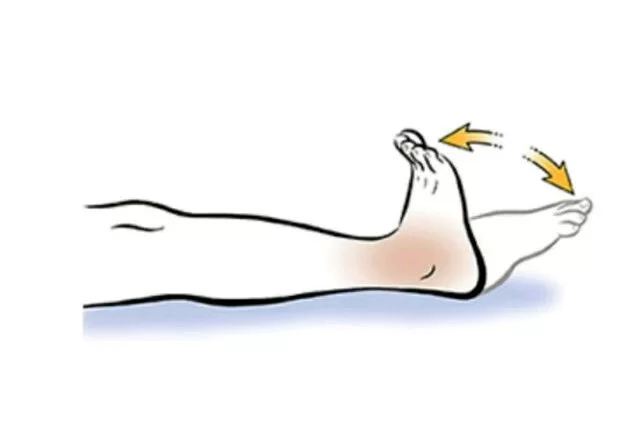
- Ankle Pumps: Sit on a chair and raise your feet off the ground. Point your toes forward as far as you can, and then flex them back toward your body. Repeat this pumping motion for about 10 repetitions, several times a day.
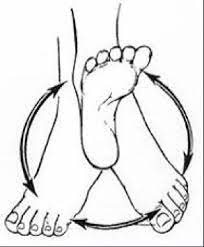
- Calf Raises: Stand with your feet shoulder-width apart. Slowly rise up on your toes as high as you can, and then lower your heels back down. Start with 10 repetitions and gradually increase as your strength improves.
- Leg Circles: Lie flat on your back and extend one leg up toward the ceiling. Rotate your leg in circular motions, clockwise and counter clockwise. Do 10 circles in each direction and then switch legs.
- Swimming: Swimming is a fantastic exercise that works the entire body, including the legs. The buoyancy of the water also lessens the impact on the joints. Aim for swimming sessions of 20-30 minutes, two to three times a week.
To improve circulation in feet and ankles:
- Ankle Circles: Sit in a chair with your feet flat on the floor and perform ankle circles. Lift one foot off the floor and circularly spin your ankle. Begin with little circles and gradually widen them. Make 10 circles in one direction, then switch to the opposite direction. Repeat with the other foot.
- Toe Raises: Stand up straight and balance your weight evenly on both feet. Raise your toes slowly off the ground while keeping your heels grounded. Lower your toes back down after holding for a little while. Aim for 10-15 repetitions.
- Toe Curls: Sit in a chair with your feet flat on the floor and perform toe curls. Use a towel/resistance band on your toes to grab and pull the towel or resistance band toward you. Repeat this motion 10-15 times with each foot.
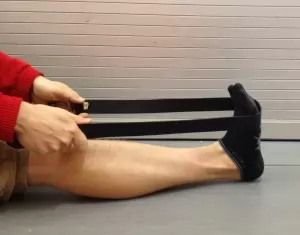
- Foot Stretches: Sit on the edge of a chair and extend one leg in front of you. Wrap a towel or resistance band around the ball of your foot and gently pull it toward you while keeping your leg straight. After holding the stretch for 15 to 30 seconds, release. Repeat the stretch 2-3 times for each foot.
- Toe Taps or Flexes: Sit in a chair with your feet flat on the floor and do toe taps or flexes. Lift one foot slightly off the floor and tap your toes on the ground rapidly for 20-30 seconds. Then, switch to the other foot. Alternatively, you can flex your toes up towards your shins and then release them back down in a tapping motion.
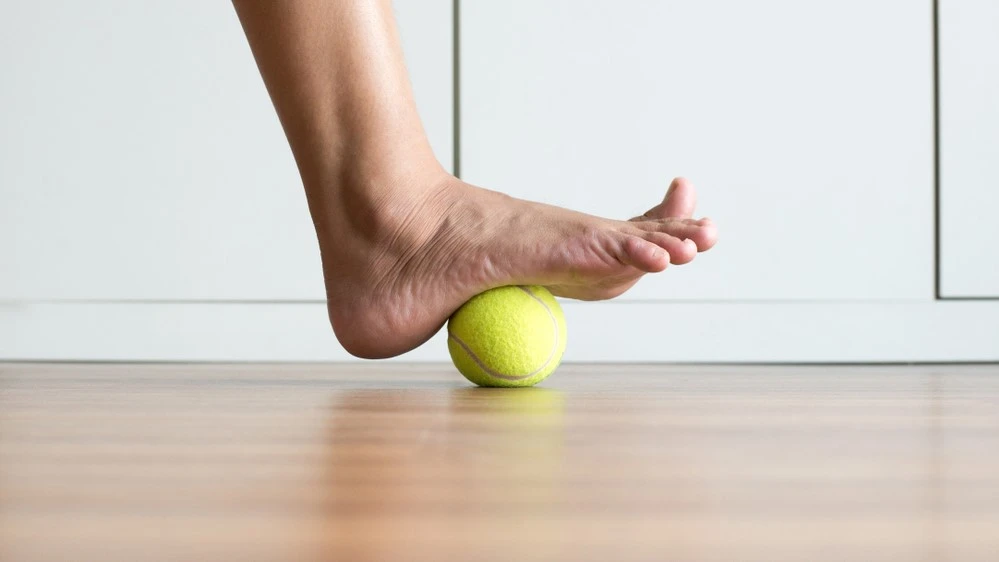
- Rolling a Tennis Ball or Massage Ball: Sit on a chair and place a tennis ball or massage ball under your foot. When rolling the ball beneath your foot, use light pressure. Look carefully at the arches, heels, and balls of your feet. Continue for a few minutes, then switch to the other foot.
Exercise to improve circulation in your core (abdomen and lower back):
- Planks: Begin by doing a push-up with your hands just beneath your shoulders. Lower yourself onto your forearms and keep your body in a straight line from head to toe. At first, try to keep this posture for at least 30 seconds while contracting your core muscles. Extend the workout progressively as your strength improves.
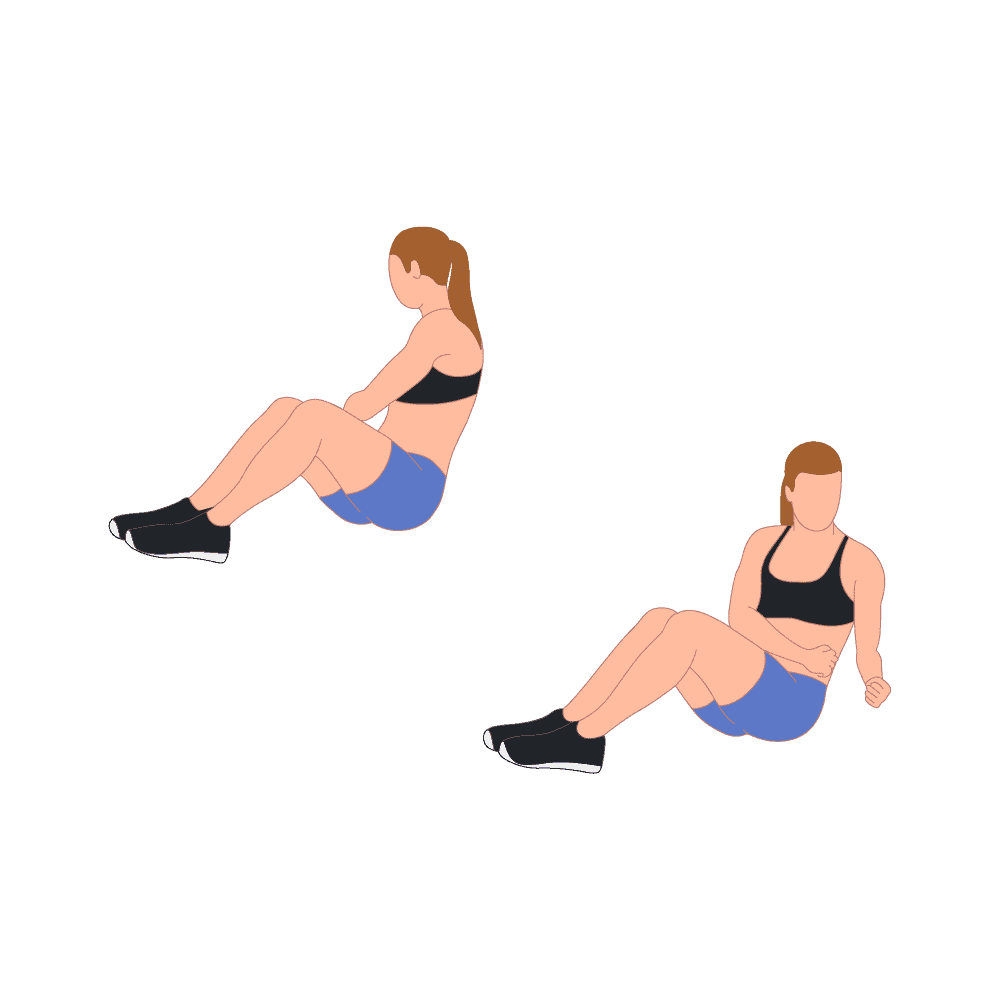
- Russian Twists: Kneel down on the ground, flattening your feet. Gently lean back while keeping your back straight. Clasp your both hands and lift them in front of your chest. Twist your torso to one side, bringing your clasped hands towards the floor beside your hips. Return to the beginning posture before twisting to the opposite side. Repeat this twisting motion for 10-15 repetitions on each side.
- Bicycle Crunches: Lie on your back, legs bent, and hands behind your head. Off the ground, raise your upper back, shoulders, and head. Straighten one leg and raise the opposing knee to your chest. Simultaneously rotate your torso, bringing your opposite elbow towards the bent knee. Repeat this motion, alternating sides, for 10-15 repetitions on each side.

- Superman Pose: Lie faces down on the floor with your arms extended in front of you and legs straight. Keep your core engaged as you simultaneously lift your arms, chest, and legs off the ground. After a little period of holding this position, drop your limbs back down. Aim for 10-15 repetitions.
- Pilates Exercises: Pilates is a great way to engage and strengthen your core muscles. Moves like the Pilates Hundred, Leg Circles, and Pilates Roll-Up are effective for targeting your abdomen and lower back. You can find instructional videos or consider joining a Pilates class for proper guidance.
- Yoga Poses: Boat pose (Navasana) and Cobra pose (Bhujangasana) are two yoga poses that engage and strengthen your core muscles. In a Boat pose, sit on the floor with your legs extended in front of you. Lift your legs off the ground, balancing on your sitting bones, and extend your arms parallel to the ground. Hold for a few breaths and progressively lengthen the hold. In the Cobra pose, lie on your stomach with your palms planted near your shoulders. Press your hands into the ground, lift your chest, and arch your back while keeping your pelvis on the ground. Release from the posture after a few breaths.
To improve circulation in the shoulders, chest, and upper back:
- Push-up: Start in a high plank position with your hands slightly shoulder-width apart. Lower your body to the floor by bending your elbows, keeping your body in a straight line. Push back up to the starting position. If the full bend is difficult, you can modify it by doing knee pulls or using an elevated surface such as a bench or wall. The goal is 10-15 repetitions.
- Shoulder weights: Stand or sit with a dumbbell in each hand, holding them at shoulder height, palms facing forward. Press the weights straight overhead and extend your arms fully. Lower the weights back to shoulder height. Start with a weight that pushes you but yet enables you to keep the correct form. The goal is 10-15 repetitions.
- Chest press: Lie on a flat bench or floor with a dumbbell in both hands, at chest height, palms facing forward. Press the weights up until your arms are extended, then lower them back to chest level. Focus on squeezing your pectoral muscles when lifting weights. The goal is 10-15 repetitions.
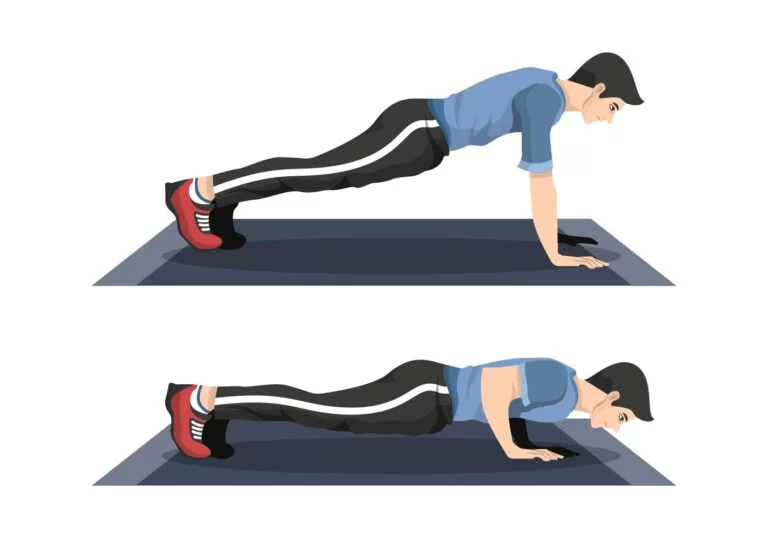
- Floor pull-ups: Sit on a pull-down machine or use an overhead resistance band. Grab the bar or band with a wide grip and pull it down to your upper chest, keeping your back straight. As you reach down, press your shoulder blades together. Slowly lower back to the starting position. The goal is 10-15 repetitions.
- Rows: Place your feet with your shoulders apart and gently bend your knees. Hold a resistance band or dumbbell with your arms extended in front of you. Pull the bar or weights back toward your body, squeezing your shoulders. Slowly lower back to the starting position. The goal is 10-15 repetitions.
- Arm Lift: Standing with your feet shoulder-width apart, lift your arms while keeping your palms towards your body and holding dumbbells. For a front raise, lift the weights straight out in front of you to shoulder height, then lower them back down. Raise the weights from side to side until they reach shoulder height, then lower them back down. To do a push-up, bend your knees slightly, bend forward from your hips, and raise the weights to your sides until they reach shoulder height, then lower them back down. For each exercise, aim for 10-15 repetitions.
Exercise to improve blood circulation in hands and arms:
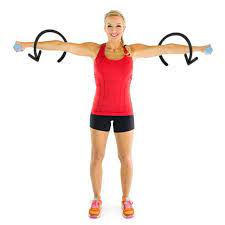
- Arm circles: Stand with your feet shoulder-width apart and your arms out to your sides. Make small circular movements with your hands and gradually increase the size of the circles. After a few seconds, change the direction of the circles. The goal is 10-15 repetitions in both directions.
- Bicep curls: Hold a dumbbell in each hand with your palms facing forward and your arms extended by your sides. Bend your elbows and lift the weights to your shoulders, squeezing your biceps. Lower the weights slowly. The goal is 10-15 repetitions.
- Tricep Dips: Sit on the edge of a chair or bench with your hands on the edge, fingers facing forward. Slide your glutes off the seat and lower your body by bending your elbows. Maintain a close connection with the chair’s edge. Push yourself back to the starting position by using your triceps. The goal is 10-15 repetitions.
- Wrist rotation: Extend your arm in front of you, palm down. Roll your wrist in a circular motion, starting with small circles and gradually increasing their size. After a few seconds, change the direction of the circles. Repeat the exercise with the other hand. The goal is to do 10-15 laps in both directions.
- Finger squeeze or grip exercises: squeeze and release with an exercise ball, tennis ball, or grip strengthener. Squeeze the object as hard as you can and hold it for a few seconds before releasing it. With each hand, perform this exercise ten to fifteen times.

- Arm Stretch and Opening/Closing Movements: Begin by extending your arm by spreading your fingers apart. For a little while, hold this stretch, and then release it. Repeat this stretch several times. Next, draw the fingers of the fist to the center of the palm. Hold for a few seconds, then open your arms wide and extend your fingers. Repeat this opening and closing motion 10-15 times.
Exercise to improve blood circulation in the neck and head:

- Neck rotations: Stand or lie down with your back straight. Gently turn your head to the other side, and bring your chin to your shoulder. Stay in this position for a few seconds, and touch your neck lightly. Slowly return to the center and then repeat on the other side. Do 5-10 rounds on each side.
- Neck stretch: Start by sitting or standing with your back straight. Tilt your head to one shoulder, bringing your ear closer to it. On the other side of your neck, you should experience a mild stretch. Hold for a short while, then come back to the center and do the opposite side. Do 5-10 stretches on each side.
- Neck Isometric: Place one hand against your head, above your ear. Apply gentle resistance as you tilt your head to the side, trying to push the hand. Hold for a short while, then release. Repeat on the other side. You can also put a hand on your forehead and resist trying to push your head forward. Do 5-10 isometric contractions in different directions.
- Facial exercises: Activating the facial muscles can also improve blood circulation and relieve tension in the head and neck area. here are some examples:
- Smile widely and hold for a few seconds. Repeat 5-10 times. Make a crease by bringing your eyebrows together and holding them for a few seconds. Repeat 5-10 times.
- Raise your brows as high as you can and keep them there for just a few seconds. Repeat 5-10 times.
- Press your lips together and hold them for a few seconds. Repeat 5-10 times.
Exercises to improve entire body circulation:
Cardiovascular Exercises:
Cardiovascular exercises are particularly effective for improving circulation as they engage large muscle groups, increase heart rate, and promote blood flow throughout the body.
Following cardiovascular exercises that can help improve circulation:
- Brisk Walking: You don’t need to be an Iron Man triathlete to get your blood flowing. In fact, circulation will be improved by any workout that raises your heart rate. Walking is included. Even in those with peripheral artery disease (an artery constriction that affects circulation, notably in the legs), 20 to 30 minutes of vigorous walking most days of the week has been proven to improve circulation. Walking over time helps strengthen your heart and enhance your cardiovascular health in general. For adequate circulation to occur, a cardiovascular system must be in good shape.
- Walking at a brisk pace raises your heart rate and promotes blood flow. Swing your arms and maintain good posture while walking.
- Running or Jogging: Running or jogging is a higher-intensity exercise that boosts cardiovascular fitness and circulation. Start at a comfortable pace and gradually increase speed and duration.
- Cycling: Whether outdoors or on a stationary bike, cycling is an excellent cardiovascular exercise that promotes circulation. Vary the intensity by adjusting resistance levels or incorporating intervals.
- Swimming: Swimming is a low-impact, full-body workout that enhances cardiovascular fitness and promotes circulation. It engages multiple muscle groups and provides resistance against the water.
- Jumping Rope: Jumping rope is a high-intensity exercise that elevates heart rate and stimulates blood flow. As your fitness increases, start with shorter intervals and eventually lengthen them.
- High-Intensity Interval Training (HIIT): Short bursts of intensive activity are interspersed with quick rest intervals in HIIT. Incorporate exercises like burpees, squat jumps, or mountain climbers for intense cardiovascular stimulation.
- Dance Fitness: Engaging in dance-based workouts, such as Zumba or dance aerobics, can be an enjoyable way to improve cardiovascular fitness and circulation. These activities combine rhythmic movements with aerobic exercise.
- Step Aerobics: Step aerobics involves stepping up and down on an elevated platform, providing a challenging cardiovascular workout. It improves circulation while also targeting leg strength and endurance.
- Cardio Kickboxing: Combining martial arts-inspired movements with cardiovascular exercise, cardio kickboxing is an excellent way to improve circulation. It involves punches, kicks, and dynamic movements that elevate heart rate.
- Stair Climbing: Climbing stairs, whether using a stair climber machine or actual stairs, is a highly effective cardiovascular exercise. It engages the lower body muscles and promotes blood flow.
Start gradually and gradually increase the intensity and duration of your cardiovascular exercises. Aim for 150 minutes of moderate-intensity activity or 70 minutes of vigorous exercise each week, whichever is more.
High-Intensity Interval Training (HIIT) to improve circulation:
High-Intensity Interval Training (HIIT) is an excellent choice for improving circulation. Short bursts of intensive activity are interspersed with quick rest intervals in HIIT. This type of training challenges your cardiovascular system increases heart rate, and stimulates blood flow.
- Choose your exercises: Select a combination of high-intensity exercises that engage multiple muscle groups. Examples include burpees, squat jumps, mountain climbers, high knees, or jumping lunges.
- Warm-up: Begin with a dynamic warm-up to prepare your body for the intense workout. This can include jogging in place, arm circles, leg swings, or jumping jacks.
- Work interval: Perform each exercise at maximum effort for a short duration, typically around 20 to 60 seconds. Push yourself to exertion and maintain good form throughout.
- Recovery interval: Take a brief active recovery period between exercises, typically lasting around 10 to 30 seconds. You can walk or jog in place or perform low-intensity movements to catch your breath.
- Repeat: Complete a set number of rounds or cycles of the work and recovery intervals. Start with a lower number of rounds, such as 3 to 4, and gradually increase as your fitness level improves.
- Cool-down: After the final round, allow your heart rate to gradually decrease by performing a cool-down. Incorporate gentle movements and static stretches to promote relaxation and flexibility.
HIIT exercises may be modified to meet your desires and degree of fitness. You can modify the duration and intensity of the work and recovery intervals to suit your needs. Incorporating HIIT into your fitness routine can improve cardiovascular health, enhance circulation, and provide a time-efficient way to boost overall fitness levels.
Yoga Poses:
Yoga Poses are beneficial for improving circulation as they incorporate movements that promote blood flow, stretch the body, and encourage mindful breathing.
- Downward-Facing Dog (Adho Mukha Svanasana):
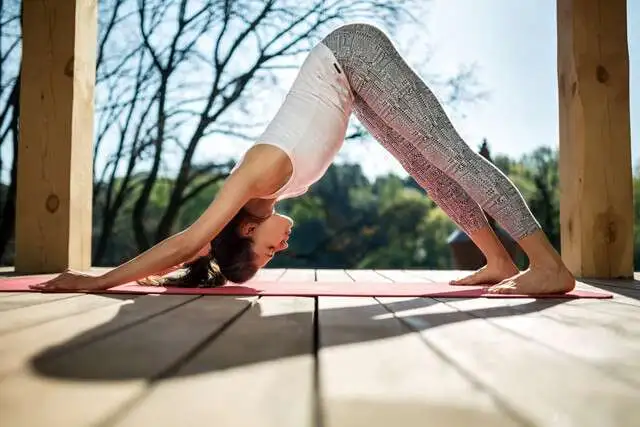
As your hips and heart are positioned above your head in the downward-facing dog, gravity helps to improve blood flow to your head, which is amazing for circulation. Your legs’ circulation is enhanced as it also strengthens them.
How to do this pose: Begin on your hands and knees, then lift your hips up and back to form an inverted V-shape. Downward-Facing Dog encourages blood flow to the brain, while also stretching the legs and shoulders.
- Warrior II (Virabhadrasana II):
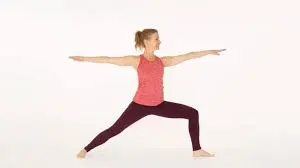
Virabhadrasana II is excellent for enhancing leg muscular tone. The veins in your legs will be compressed and released by your muscles, improving circulation.
How to do this pose: Stand with your feet wide apart, extend your arms out to the sides, and bend one knee while keeping the other leg straight. Warrior II pose engages the leg muscles and promotes blood flow throughout the body.
- Triangle:
Triangle is another standing position that is excellent for leg circulation and muscular tone. This position promotes circulation in your torso by opening up your chest and enlarging your lungs.

How to do this position: Begin in the mountain position (also known as Tadasana), then spread your feet slightly wider than shoulder-width apart. Then, stretch your arms so that they are parallel to the ground, palms facing down.
To the side, stoop.
Use your arms to reach.
Hold and do it again.
- Legs-Up-the-Wall Pose (Viparita Karani):
Lean against a wall while lying on your back with your legs outstretched. This pose allows blood to flow back toward the heart and reduces swelling in the legs, promoting circulation.
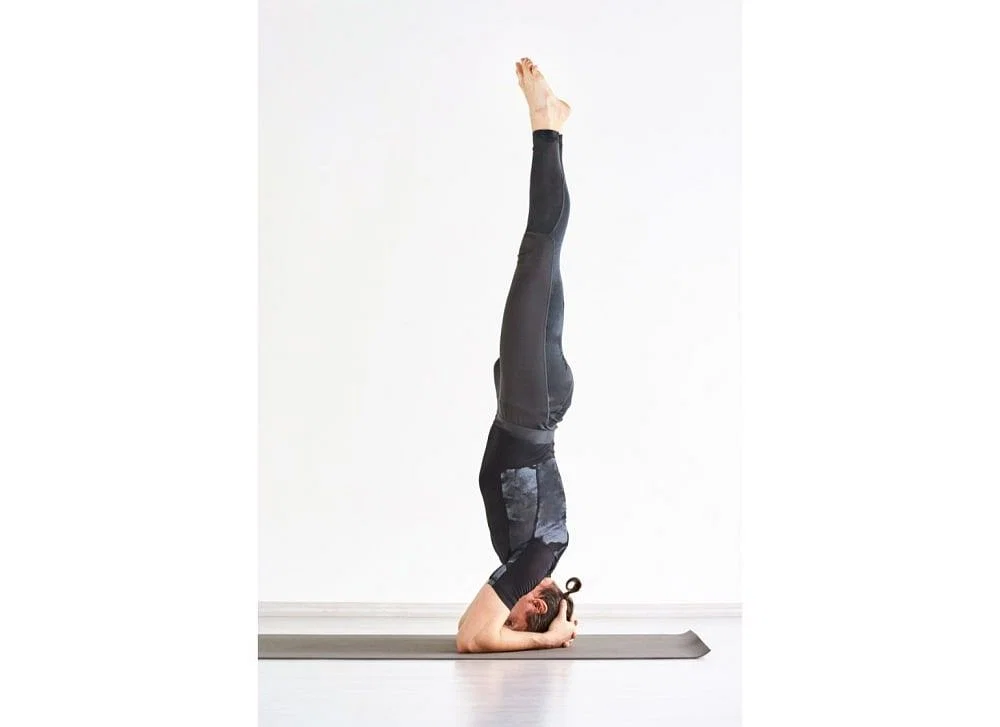
- Headstand (Sirsasana):
This inversion pose promotes blood circulation to the brain and upper body. It is an advanced pose, so it’s essential to practice it under the guidance of a qualified instructor.
- Bridge Pose (Setu Bandhasana):
Bend your knees while lying on your back, then raise your hips. The bridge pose stretches the chest, shoulders, and neck while promoting circulation in the lower body.
- Cobra Pose (Bhujangasana):
Lie face down with your palms on the ground, and gently lift your upper body while keeping your pelvis and lower body grounded. The cobra pose helps open the chest and stimulates blood flow throughout the body.
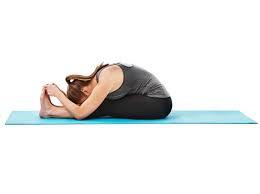
- Seated Forward Bend (Paschimottanasana):
Sit with your legs straight in front of you and move forward, try to reach for your toes as you can. This pose stretches the back of the legs and promotes circulation in the lower body.
- Tree Pose (Vrikshasana):
Stand tall and place one foot on the inside of the opposite leg, balancing on one leg. Tree pose improves balance, strengthens the legs, and encourages circulation in the standing leg.
Pilates for improving circulation:
Pilates is a wonderful practice that can help improve circulation by engaging the muscles, enhancing flexibility, and promoting mindful breathing. There are many Pilates exercise that can specifically target and improve circulation:
- The Hundred:

Lie on your back with your legs extended, lift your head and shoulders off the mat, and extend your arms by your sides. Pump your arms up and down in small, controlled movements while breathing deeply. The Hundred exercise increases heart rate and stimulates circulation throughout the body.
- Leg Circles:
As you lay on your back, raise your legs up to the ceiling. Circle one leg at a time in controlled movements, focusing on engaging your core and maintaining proper alignment. Leg circles promote blood flow in the legs and activate the hip and leg muscles.
- Roll-Up:
Lay backward with your arms raised in the air. Slowly roll up, segment by segment, to a seated position. The roll-up movement articulates the spine and promotes flexibility, which can enhance circulation in the back and torso.
- Spine Stretch Forward:
Sit straight and keep your legs also straight in front of you and your feet flexed. Inhale deeply, then exhale as you fold forward, reaching toward your toes. This exercise stretches the back, hamstrings, and shoulders, improving circulation along the back of the body.
- Swan Dive (Superman position):

Lie face down with your hands positioned near your chest and your legs extended. Inhale as you lift your chest and torso off the mat, keeping your pelvis grounded. Swan dive helps open the chest, stretch the spine, and increase blood flow to the upper body.
- Pilates Swimming:
Lay face down with your legs straight and your arms out in front of you. Lift your arms, legs, and chest off the mat while fluttering your limbs. This exercise engages the back muscles, promotes circulation, and improves overall strength and flexibility.
- Standing Pilates:
Incorporate standing exercises like squats, lunges, and standing leg lifts. These movements engage larger muscle groups and promote overall circulation.
Deep Breathing Exercise for improve circulation:
Deep breathing exercises can be highly effective for improving circulation by enhancing oxygen intake, relaxing the body, and promoting a healthy respiratory system.
Breathing exercises that you can practice to improve circulation:
- Diaphragmatic Breathing:
Also known as belly breathing or abdominal breathing, this technique involves breathing deeply into your diaphragm. Sit or lie down comfortably, place one hand on your abdomen, and take slow, deep breaths. As you inhale, allow your belly to rise, and as you exhale, let it fall. Focus on filling your lungs fully with each breath and releasing any tension with each exhale.
- Alternate Nostril Breathing (Nadi Shodhana):
Sit comfortably and cover your right nose with your thumb. Inhale deeply through your left nostril, then use your ring finger or pinky finger to close your left nostril as you release your right nostril. Exhale through your right nostril. Continue this pattern, alternating the closing and opening of the nostrils, while maintaining slow, deep breaths. This technique helps balance the energy in your body and supports improved circulation.
- Box Breathing:

Find a comfortable seated position and imagine drawing a square in your mind. Inhale slowly for a count of four, hold the breath for a count of four, exhale for a count of four, and hold the breath again for a count of four. Repeat this pattern, focusing on the equal length of each inhale, exhale, and pause. Box breathing helps regulate your breathing, relaxes the body, and supports better circulation.
- Breath of Fire (Kapalabhati):
Sit up straight and take a deep inhale, then forcefully exhale through your nose while contracting your abdominal muscles. Allow the inhales to happen naturally as a result of the exhales. Focus on the quick, forceful exhalations while maintaining a steady rhythm. This technique increases oxygen intake and stimulates circulation throughout the body.
- 4-7-8 Breathing:
Sit or lie down comfortably and exhale completely. For a count of four, close your mouth and take a deep breath through your nostrils. Hold your breath for a count of seven, then exhale forcefully through your mouth for a count of eight. Repeat this cycle a few times. This breathing pattern helps relax the body, reduce stress, and support circulation.
Stretching exercise to improve circulation:
These exercises can contribute to improved circulation by increasing blood flow to the muscles, promoting flexibility, and reducing muscle tension.
Stretching exercises:

- Neck Stretches: Stretching your neck involves a little head tilt that brings your ear closer to your shoulder. Hold for 15 to 30 seconds, then switch to the opposite side. You can also do forward and backward neck stretches, as well as gentle rotations, to promote blood flow to the neck and head.
- Shoulder Rolls: Roll your shoulders in a circular motion, starting from a relaxed position and moving forward or backward. This exercise helps release tension in the shoulders and upper back, allowing for improved blood circulation in those areas.
- Chest Opener: Stand tall, interlace your fingers behind your back, and gently lift your arms while squeezing your shoulder blades together. This stretch opens up the chest and shoulders, promoting better circulation in the upper body.
- Forward Fold: Stand with your feet hip-width apart and slowly bend forward at the hips, allowing your upper body to hang loosely. Relax your neck, shoulders, and back, and let gravity assist in stretching the hamstrings and promoting circulation in the lower body.
- Calf Stretches: Stand facing a wall, place your hands on the wall at shoulder height, and step one foot back while keeping it straight. Bend your front knee and lean forward slightly, feeling the stretch in your back calf. Hold for 10 to 30 seconds and also perform the same on the other leg. Calf stretches enhance circulation in the lower legs.
- Hamstring Stretch: Sit on the ground with one leg extended in front of you and the other bent with the sole of the foot against your inner thigh. Lean forward from your hips, reaching toward your toes while keeping your back straight. Hold for 10 to 30 seconds and perform on the other side. Hamstring stretches improve blood flow in the legs and lower body.
- Quadriceps Stretch: Stand tall and grab one ankle, bringing your heel toward your buttocks. Your posture should be erect, and your knees should be close together. Hold for 10 to 30 seconds and also perform the same on the other leg. Quadriceps stretches target the front of the thighs and can enhance circulation in that area.
- Ankle Circles: Sit on a chair or the ground and extend one leg in front of you. Move your ankle in a circular movement (Rotation of Ankle), first in one direction and then in the other. Ankle circles improve circulation in the feet and lower legs.
Dance and Zumba to improve circulation:
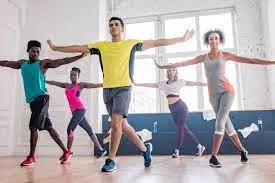
- Dance and Zumba are vibrant and rhythmic forms of exercise that can significantly improve circulation throughout the body. These dynamic activities involve a combination of cardiovascular fitness, full-body engagement, and energizing movements.
- By getting your heart pumping and increasing blood flow, dance and Zumba enhance the efficiency of your cardiovascular system, delivering oxygen and nutrients to your muscles and organs.
- The fluid and coordinated motions stimulate multiple muscle groups, while the deep breathing patterns promote oxygenation and waste removal. With their enjoyable nature, dance and Zumba provide a fun and effective way to boost circulation, leaving you feeling invigorated and revitalized.
Standing or Desk Exercises:
When you’re sitting for long, incorporating standing or desk exercise can help to improve circulation by increasing muscle activity and blood flow.
- Calf Raises: Stand with your feet hip-width apart, rise up onto your tiptoes, and then lower your heels back down. Repeat this movement for several reps to engage your calf muscles and enhance circulation in the lower legs.
- Leg Extensions: While seated, extend one leg straight out in front of you, flexing your foot. Hold for a few while, then bring it back down. Repeat with the other leg. This exercise activates the leg muscles and encourages blood flow.
- Glute Squeezes: Stand with your feet hip-width apart and squeeze your buttocks together. Hold for a few seconds, then release. Repeat this exercise several times to engage the gluteal muscles and promote blood circulation in the hips and buttocks.
- Desk Push-Ups: Stand facing a sturdy desk or counter and place your hands shoulder-width apart on the edge. Step back slightly and lean your body towards the desk, bending your arms. Push yourself away from the desk by straightening your arms. This exercise engages the upper body muscles and stimulates circulation.
- Marching in Place: Stand with your feet hip-width apart and lift one knee up towards your chest, then lower it down and repeat with the other knee. Continue alternating knees in a marching motion to increase blood flow and engage the leg muscles.
- Seated Leg Circles: Extend one leg straight out in front of you while seated. Point your toes and draw circles in the air with your foot, starting with small circles and gradually increasing the size. After a few rotations, switch directions. This exercise helps promote circulation in the legs.
- Shoulder Rolls: Stand or sit upright and gently roll your shoulders forward and backward in a circular motion. This movement helps release tension in the shoulders, improves circulation, and promotes relaxation.
- Desk Stretches: Take short breaks to stretch your neck, shoulders, and back. Perform gentle neck rolls, shoulder stretches, and seated spinal twists to relieve tension, enhance blood flow, and prevent stiffness.
FAQS:
There are several exercises that can help improve circulation, including cardiovascular exercises like running, swimming, and cycling. Other effective options include high-intensity interval training (HIIT), yoga, Pilates, walking, and strength training exercises.
It is recommended to engage in moderate-intensity aerobic exercise for at least 150 minutes per week, or vigorous-intensity exercise for 75 minutes per week, along with strength training exercises twice a week. However, it’s important to consult with a healthcare professional to determine the exercise frequency and intensity that is suitable for your specific health and fitness level.
Yes, stretching exercises can aid in improving circulation by increasing blood flow to the muscles and reducing muscle tension. Incorporating stretching into your exercise routine or performing dedicated stretching sessions can promote flexibility, relieve stiffness, and enhance circulation.
Yes, certain yoga poses and Pilates exercises can help improve circulation. In yoga, inversions like downward-facing dogs and legs-up-the-wall poses encourage blood flow from the lower body toward the heart. Similarly, Pilates exercises that target the core and promote overall body movement can enhance circulation.
Deep breathing exercises help to improve circulation by enhancing oxygen intake and promoting relaxation. Deep breaths facilitate the exchange of oxygen and carbon dioxide, improving oxygenation in the bloodstream and aiding circulation to various organs and tissues.
Yes, incorporating desk exercises or standing exercises into your daily routine can help improve circulation. These exercises, which can be done while sitting or standing at your desk, increase muscle activity, stimulate blood flow, and prevent prolonged sitting-related stagnation.
The Jump rope exercises increase heart rate, promote blood flow, and engage multiple muscle groups, which helps improve circulation throughout the body. The rhythmic jumping motion enhances cardiovascular fitness, making jump rope an effective exercise for boosting or improving circulation.
It is wise to speak with a medical expert, especially if you are concerned about any underlying health issues. They can provide personalized recommendations and ensure that your exercise routine is safe and suitable for your individual needs and health status.
Numerous signs of poor circulation may appear, and these symptoms may change according to their severity and underlying reasons. Following are a few typical signs of poor circulation:
Cold Extremities, Tingling or numbness, Swelling Weakness and Fatigue, Muscle Cramps, Slow Healing Wounds, Skin changes, Hair Fall, Low Pulse, Erection problems.
To improve circulation in your legs and feet, you can try activities such as regular walking or jogging, leg exercises like ankle circles and toe raises, wearing compression socks or stockings, elevating your legs when sitting or lying down, and avoiding prolonged periods of sitting or standing. These are exercises for improving circulation in the legs and feet.
Sedentary lifestyle, Obesity, Smoking, Uncontrolled high blood pressure, High Cholesterol, Diabetes, Family history, Age, Poor Diet, and Chronic Illnesses.
While specific exercises targeting the head and scalp may not exist, promoting overall circulation can benefit this area. Practices such as regular aerobic exercise, scalp massages, maintaining good posture, practicing deep breathing techniques, and incorporating stress-reduction techniques like meditation or yoga can contribute to improved circulation throughout the body, including the head and scalp.

